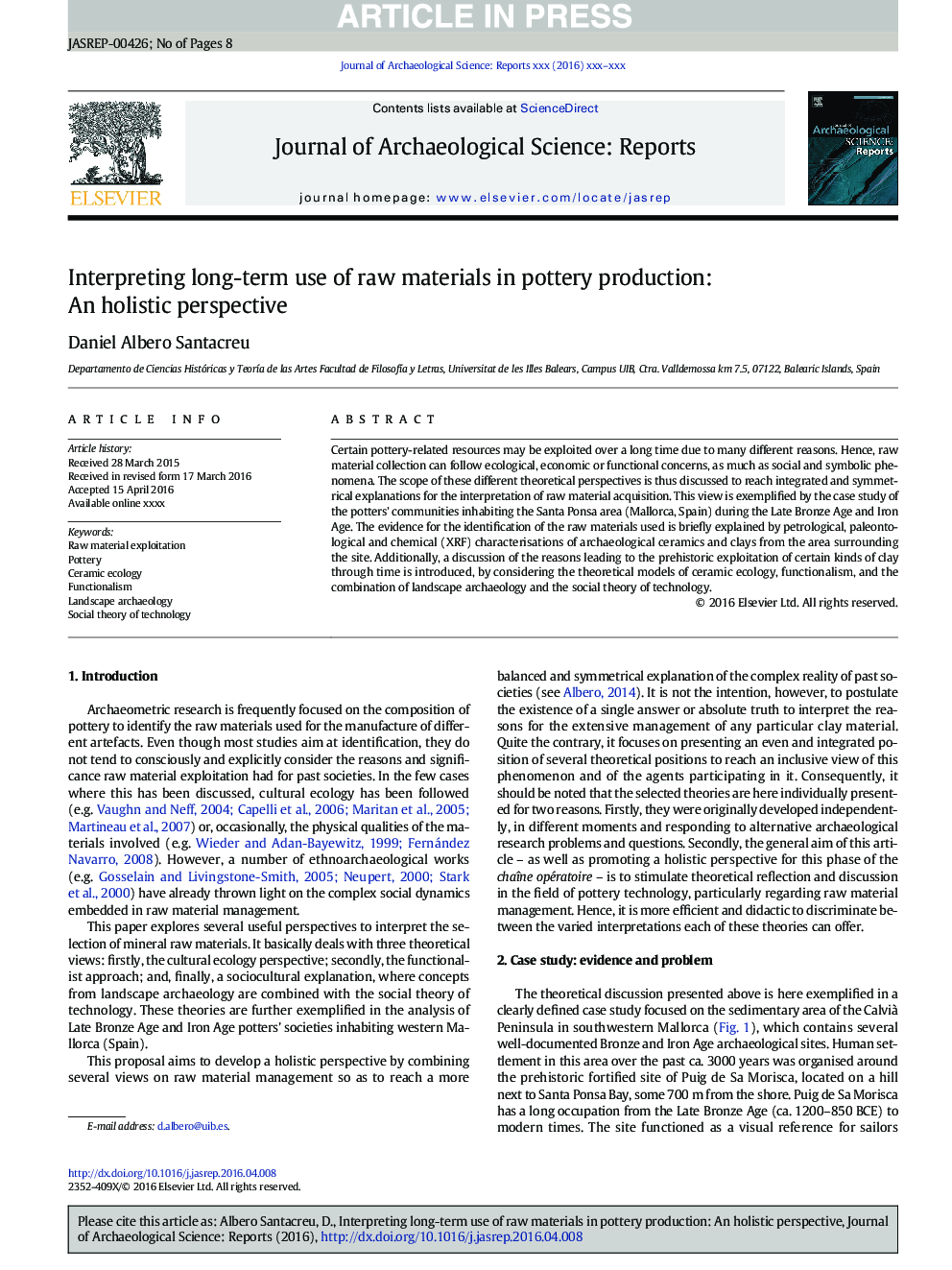| Article ID | Journal | Published Year | Pages | File Type |
|---|---|---|---|---|
| 7444926 | Journal of Archaeological Science: Reports | 2017 | 8 Pages |
Abstract
Pottery-related resources can be exploited over a long period of time for many different reasons. For example, raw material collection can be influenced by ecological, economic or functional criteria, as much as social and symbolic phenomena. The scope of these different theoretical perspectives is discussed in order to reach integrated and symmetrical interpretations of raw material acquisition. This approach is exemplified using a case study of the potter communities inhabiting the Santa Ponsa area (Mallorca, Spain) during the Late Bronze Age and Iron Age. The identification of the raw materials used is explained briefly, based on petrologic, palaeontological and chemical characterisation of the archaeological ceramics and the clays from the area surrounding the site. Additionally, the reasons behind the prehistoric exploitation of certain kinds of clay over time are discussed, by considering the theoretical models of ceramic ecology, functionalism and a combination of landscape archaeology and social theory of technology.
Related Topics
Social Sciences and Humanities
Arts and Humanities
History
Authors
Daniel Albero Santacreu,
